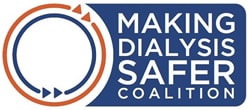Healthcare-Associated Infections/Antimicrobial Resistance
Healthcare-Associated Infections/Antimicrobial Resistance
Mission statement: To prevent healthcare-associated infections and spread of antimicrobial-resistant organisms through collaboration with partners; surveillance and response to outbreaks; data analysis; education; and policy change.
Vision: Use evidence-based practice to serve health care facilities and to be free of preventable healthcare-associated infections.
Reports
- Utah Healthcare-associated infections (HAI) annual reports
- Healthcare worker influenza vaccination coverage report
- 2020-2021 Utah COVID-19 vaccination coverage report for long-term care facilities
Archives
- UHIP meeting minutes
- Monthly digest
- Sign up to receive the monthly digest
- Webinars
Resources
- Utah Department of Health and Human Services (DHHS)
- Recognizing measles in healthcare clinics
- Interfacility infection control transfer form
- MDRO case investigation form
- ED transfer communication form
- Infection prevention and preparedness manual for long-term care facilities
- Use of transmission-based precautions for all healthcare settings table
- Enhanced-barrier and contact precautions flowchart for nursing homes
- CDC: Healthcare-associated infections
- APIC Utah Chapter
- CDC National Healthcare Safety Network
- Long-term care facilities (LTCF)
- DHHS CIC study sessions
- Making Dialysis Safer Coalition

